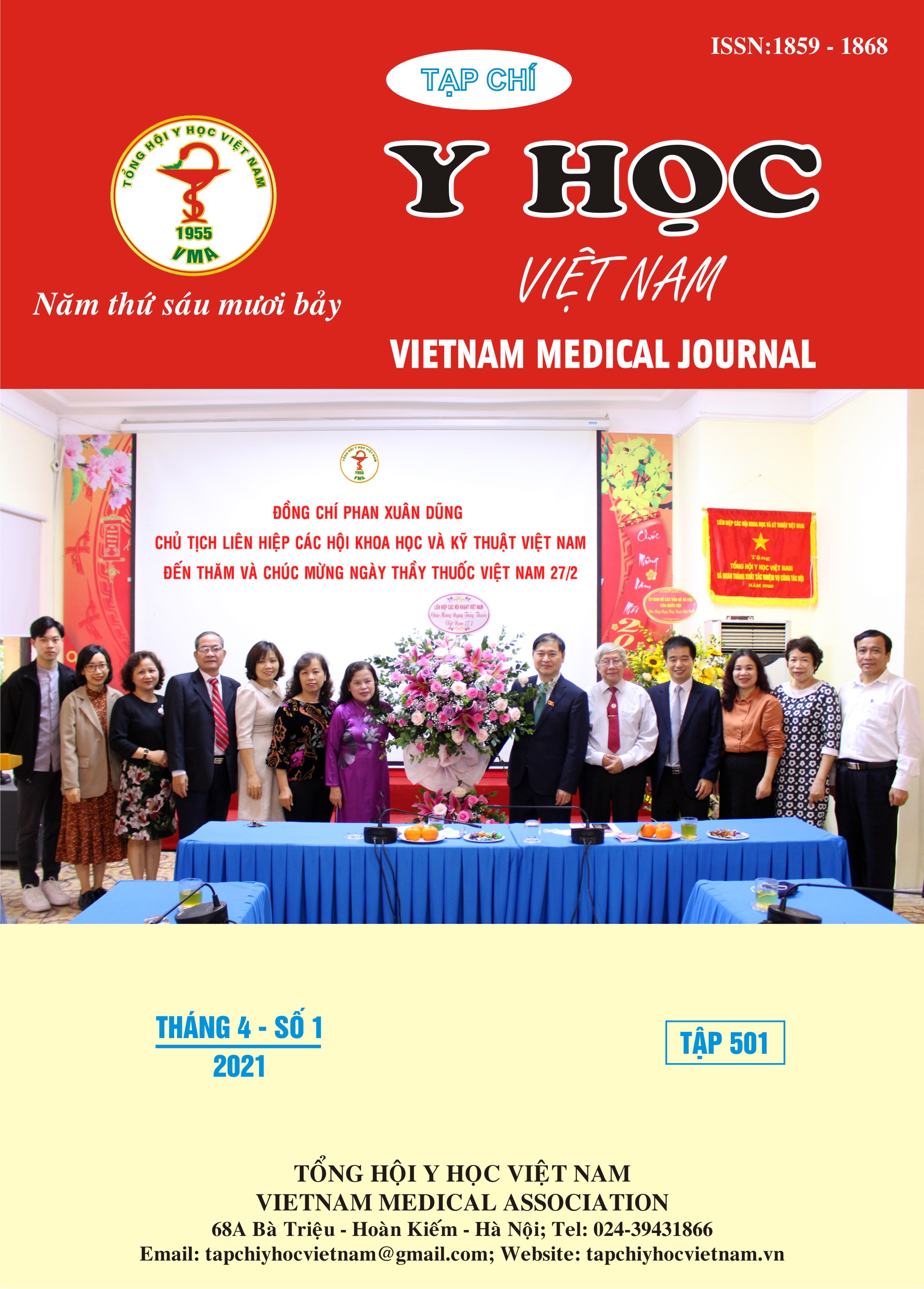CLINICAL, SUBCLINICAL CHARACTERISTICS AND EARLY RESULTS OF ENDOVASCULAR REPAIR IN THE TREATMENT OF INFRARENAL ABDOMINAL AORTIC ANEURYSM
Main Article Content
Abstract
Introduction: Abdominal aortic aneurysms (AAA) was the local dilatation of aortic artery with a diameter larger than the diameter of the normal abdominal aortic segment by 1.5 times. The aneurysmal sac can grow over time and progress to rupture with a high risk of death unless properly treated. Endovascular aneurysm repair (EVAR) was widely applied with the safety and effectiveness in the treatment of AAA. Objective: This study was conducted to investigate the clinical and subclinical characteristics and to evaluate the early results of endovascular repair in the treatment of infrarenal AAA. Material and method: This is a prospective study. All cases of infrarenal AAA were treated by EVAR at Vascular surgery Department, Cho Ray Hospital from May-2012 to August-2017. Results: A total of 95 cases (71 males and 24 females) were eligible for inclusion in the study. The mean age was 73,8 ± 17,6. The most common clinical symptom was abdominal pain (62,1%). Hypertension, smoking and lipid disorders were considered the common risk factors and comorbidities. The majority of aneurysms were fusiform with the mean diameter of 59.9 ± 15.1mm. EVAR was performed with the technical success rate of 98,9%. The most complication was local hematoma (11,6%). The early mortality rate of 1.1% occurred in 1 patient with myocardial infarction in the postoperative period. Conclusion: AAA is a dangerous disease and common in elderly people. EVAR is a minimally invasive method showing the safe and efficiency in the treatment of infrarenal AAA
Article Details
Keywords
Abdominal aortic aneurysms
References
2. Becquemin JP, Pillet JC, Lescalie F, Sapoval M, Goueffic Y, Lermusiaux P, Steinmetz E, Marzelle J, trialists ACE: A randomized controlled trial of endovascular aneurysm repair versus open surgery for abdominal aortic aneurysms in low- to moderate-risk patients. J Vasc Surg 2011, 53(5):1167-1173 e1161.
3. Powell JT, Sweeting MJ, Ulug P, Blankensteijn JD, Lederle FA, Becquemin JP, Greenhalgh RM, Evar DO, Trialists ACE: Meta-analysis of individual-patient data from EVAR-1, DREAM, OVER and ACE trials comparing outcomes of endovascular or open repair for abdominal aortic aneurysm over 5 years. Br J Surg 2017, 104(3):166-178.
4. Aburahma AF, Campbell JE, Mousa AY, Hass SM, Stone PA, Jain A, Nanjundappa A, Dean LS, Keiffer T, Habib J: Clinical outcomes for hostile versus favorable aortic neck anatomy in endovascular aortic aneurysm repair using modular devices. Journal of vascular surgery 2011, 54(1):13-21.
5. Propper BW, Abularrage CJ: Long-term safety and efficacy of endovascular abdominal aortic aneurysm repair. Vasc Health Risk Manag 2013, 9:135-141.
6. Stather PW, Sidloff D, Dattani N, Choke E, Bown MJ, Sayers RD: Systematic review and meta-analysis of the early and late outcomes of open and endovascular repair of abdominal aortic aneurysm. Br J Surg 2013, 100(7):863-872.
7. Behrendt CA, Sedrakyan A, Riess HC, Heidemann F, Kolbel T, Petersen J, Debus ES: Short-term and long-term results of endovascular and open repair of abdominal aortic aneurysms in Germany. J Vasc Surg 2017, 66(6):1704-1711 e1703.


